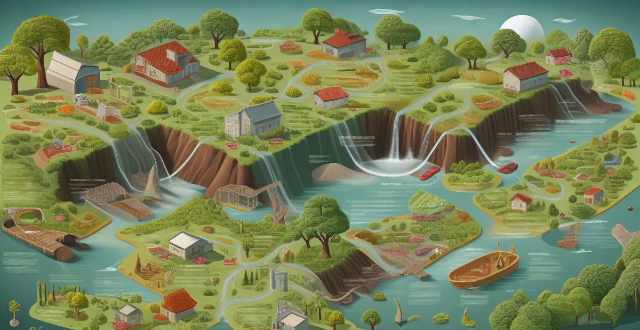The greenhouse effect is a natural process essential for life on Earth, where certain gases trap the sun's energy, warming the planet. Human activities have increased these gases' concentration, leading to an enhanced greenhouse effect and global warming. The process involves sunlight absorption, re-emission as infrared radiation, trapping by greenhouse gases, and planetary warming. Human impact includes increased emissions from burning fossil fuels and deforestation, leading to rising temperatures, extreme weather events, sea level rise, and habitat loss. Urgent action is needed to mitigate these environmental challenges.

The Greenhouse Effect: How It Works
The greenhouse effect is a natural process that warms the Earth's surface. It occurs when certain gases in the atmosphere trap energy from the sun, preventing it from escaping back into space. This trapped energy warms the planet and makes life possible. However, human activities have increased the concentration of these gases, leading to an enhanced greenhouse effect and global warming.
Key Points:
- Greenhouse Gases: These are gases that trap heat in the atmosphere.
- Natural vs. Enhanced: The natural greenhouse effect is essential for life; the enhanced effect is causing climate change.
- Global Warming: The enhanced greenhouse effect leads to rising temperatures and other climate changes.
How the Greenhouse Effect Works:
1. Sunlight Absorption: The sun emits radiation, including visible light, ultraviolet light, and infrared light. When this radiation reaches Earth, some of it is reflected back to space, and some is absorbed by the land and oceans.
2. Re-Emission as Infrared Radiation: The absorbed solar energy warms the Earth's surface and is then re-emitted as infrared radiation.
3. Trapping by Greenhouse Gases: Greenhouse gases in the atmosphere, such as carbon dioxide (CO2), methane (CH4), and water vapor (H2O), absorb some of this infrared radiation. This prevents it from escaping back into space and instead reflects it back toward the Earth's surface.
4. Warming the Planet: The trapped heat warms the lower atmosphere and the Earth's surface, making the planet habitable for a wide variety of life forms.
Human Impact on the Greenhouse Effect:
- Increased Emissions: Burning fossil fuels, deforestation, and industrial processes release more greenhouse gases into the atmosphere.
- Concentration Rise: The concentration of these gases has increased significantly since the Industrial Revolution.
- Enhanced Greenhouse Effect: This increase amplifies the greenhouse effect, leading to higher global temperatures and climate change.
Consequences of an Enhanced Greenhouse Effect:
- Rising Temperatures: Global average temperatures continue to rise, leading to more frequent and severe heatwaves.
- Extreme Weather Events: Storms, floods, and droughts become more intense and frequent.
- Sea Level Rise: Melting ice caps and glaciers cause sea levels to rise, threatening coastal communities.
- Habitat Loss: Changes in temperature and precipitation patterns affect ecosystems and biodiversity.
In conclusion, while the greenhouse effect is a natural phenomenon crucial for life on Earth, human activities have significantly enhanced its effects. This has led to an array of environmental challenges that require immediate attention and action to mitigate their impacts on our planet and future generations.